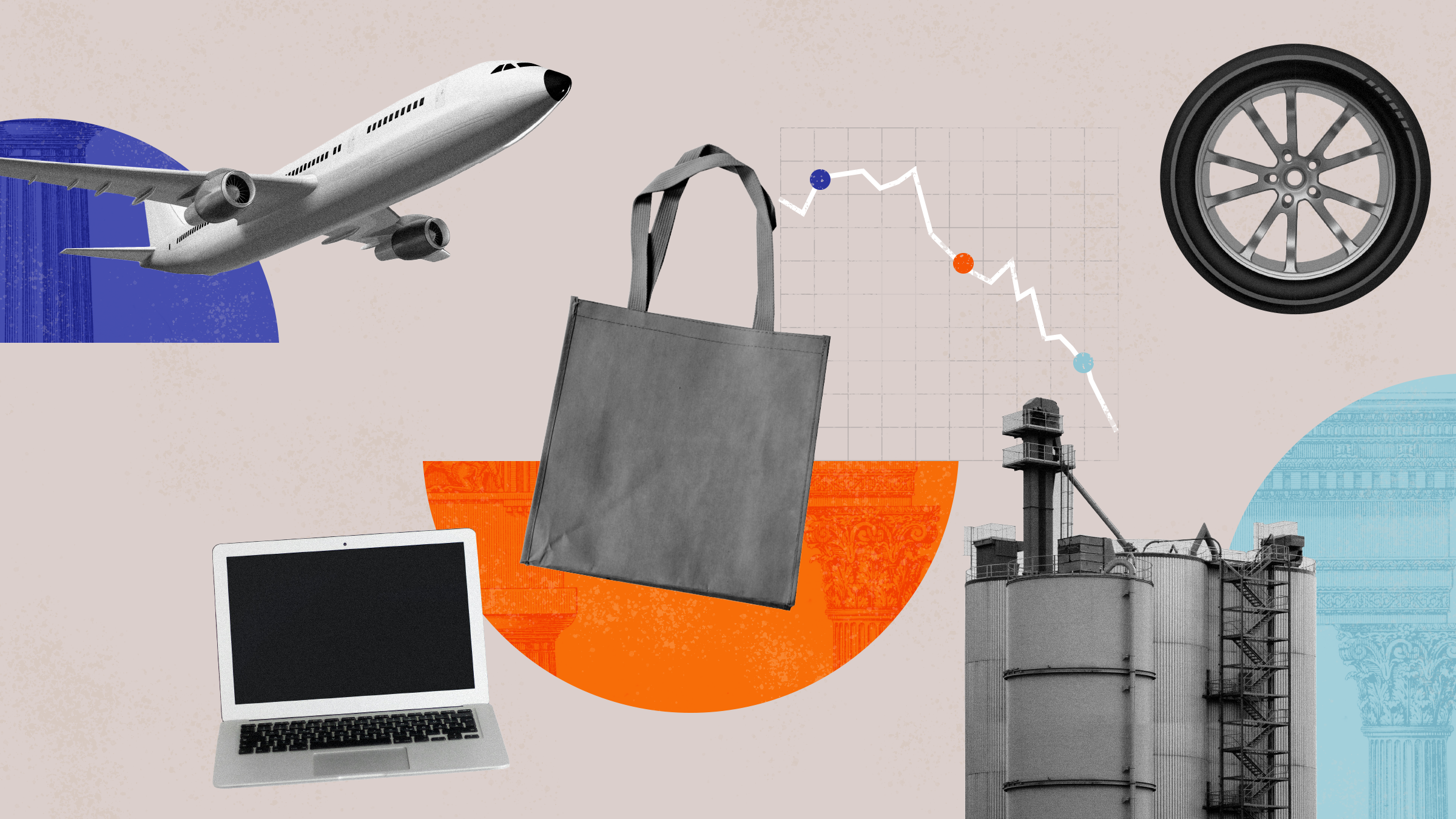AI Is Booming, but Consumer Spending Is Slowing. Which Will Prevail in the Stock Market?
What a consumer spending slowdown could mean for the stock market outlook, and how to play it.

The stock market churned higher on Friday, capping off a bumpy week of trading. Investors cheered as artificial intelligence darling Nvidia NVDA reported stellar first-quarter results on Wednesday, sending its stock nearly 13% higher for the week and underscoring the ongoing leadership of the market’s mega-cap tech giants.
However, strategists point to cracks in other parts of the market as consumer spending slows. “You’re seeing all these indications that the consumer is weakening,” says Bryant VanCronkhite, senior portfolio manager at Allspring Global Investments. “It has big implications for the economy, the markets, for everything.”
That weakness has some strategists questioning the resilience of the bull market over the coming months. “The issue here is not whether NVDA, AI, or tech in general are in good spots. Everyone can pretty much agree that they are,” BTIG chief market technician Jonathan Krinsky wrote in a note to clients on Thursday. “The question is whether that is masking deterioration in cyclical parts of the market, particularly regarding the consumer … if this weakness persists or broadens into the summer, it likely will be hard for the broad market to ignore.”
Consumers Show Signs of Weakness
Strategists say a slowdown in spending by lower-income consumers has been underway for the better part of a year. Now, signs of weakness are appearing for middle-income consumers as well. “It’s pretty unequivocal that we are seeing strain and stress,” says Katie Nixon, chief investment officer, wealth management, at Northern Trust. “What [companies] are seeing now that they didn’t see last quarter is that even higher-end consumers are trading down.”
Morningstar chief US market strategist Dave Sekera cites declining foot traffic at Starbucks SBUX and weak results at McDonald’s MCD as evidence of that trend. With pandemic-era savings depleted, middle-income consumers are skipping out on purchases like lattes and fast food in favor of more economical options. “This past quarter is the first time we saw the real signs that the middle-income consumers are now beginning to feel the compound impact of high inflation,” he explains.
Walmart’s WMT strong first-quarter results provide more evidence that consumers are seeking discounts. Krinsky also sees weakness in the consumer discretionary sector, especially homebuilders and hotels, as proof consumers are forgoing unnecessary purchases. Meanwhile, consumer defensive stocks—essentials like food and household products—are outperforming their counterparts. The Morningstar US Consumer Defensive Index is up 8.8% this year, while the Morningstar US Consumer Cyclical Index is down 1.3%.
Consumer Stock Performance
Could a Weak Consumer Dent AI Stocks?
At first glance, consumer woes and tech firms’ seemingly unstoppable rise may seem uncorrelated. But consumer spending makes up roughly two thirds of the economy, Sekera says. “Over time, that will slow the big, fast, high-tech growers,” he says.
It’s also worth remembering that for tech giants like Amazon AMZN, Meta Platforms META, Alphabet GOOGL/GOOG, and Microsoft MSFT, a large chunk of today’s revenue comes from digital advertising, not artificial intelligence. And ads are only profitable if consumers keep spending.
“If the consumer’s not willing to spend, everything slows down,” says VanCronkhite. That could conceivably dent the tech leaders’ growth. “You could see digital advertising start to slow as the economy weakens and consumer spending slows in the second half of the year. That could be some pressure in the short term,” he says. He adds, however, that the continuous flow of cash into digital advertising rather than traditional advertising could mitigate that trend. Not to mention how mega-cap tech companies are investing heavily in infrastructure for the future.
Stocks to Weather a Consumer Storm
Returns on tech stocks look all but unbeatable, despite the sector’s relatively high valuations. However, strategists think investors seeking insulation from the ongoing spending slowdown should look at consumer staples. “I’m overweight consumer staples and underweight discretionary across all our portfolios today,” says VanCronkhite. He highlights Walmart as a likely beneficiary as higher-end consumers continue trading down and searching for value.
Morningstar director of consumer sector equity research Erin Lash points to Kraft Heinz KHC and Clorox CLX, which Morningstar analysts consider undervalued. Lash says she’s focused on companies that are growing sales without implementing major discounts and ones that continue putting money into research and development and marketing—indicators of investment in long-term success.
Overall, Sekera recommends investors look for idiosyncratic plays. He likes energy stocks, which he says provide a powerful hedge against geopolitical risk and inflation. He also likes communication stocks like AT&T T and Verizon VZ, as well as defensive real estate names like medical offices and hospitals.
Nixon thinks an uncertain economic environment means investors should look to quality: “We’re buying management that, regardless of the economy or whatever other tail risk is out there, can figure it out.”
Similarly, VanCronkhite encourages focusing on companies with strong, stable demand and robust balance sheets. “The consumer has been remarkably resilient for the better part of the last six to nine months,” he says, keeping the economy and stock market growing at a healthy clip. “If the consumer is no longer there to be that support, who will be?” The AI trade may offer some upside, “but is that broad enough to help the entire market?”
The author or authors do not own shares in any securities mentioned in this article. Find out about Morningstar’s editorial policies.


/d10o6nnig0wrdw.cloudfront.net/07-08-2024/t_faa4cc76d44c4a4592915852ca96bed4_name_file_960x540_1600_v4_.jpg)
/cloudfront-us-east-1.images.arcpublishing.com/morningstar/PKH6NPHLCRBR5DT2RWCY2VOCEQ.png)
/cloudfront-us-east-1.images.arcpublishing.com/morningstar/RMBMMBAVABHL5O5JI2WDI44I3U.jpg)